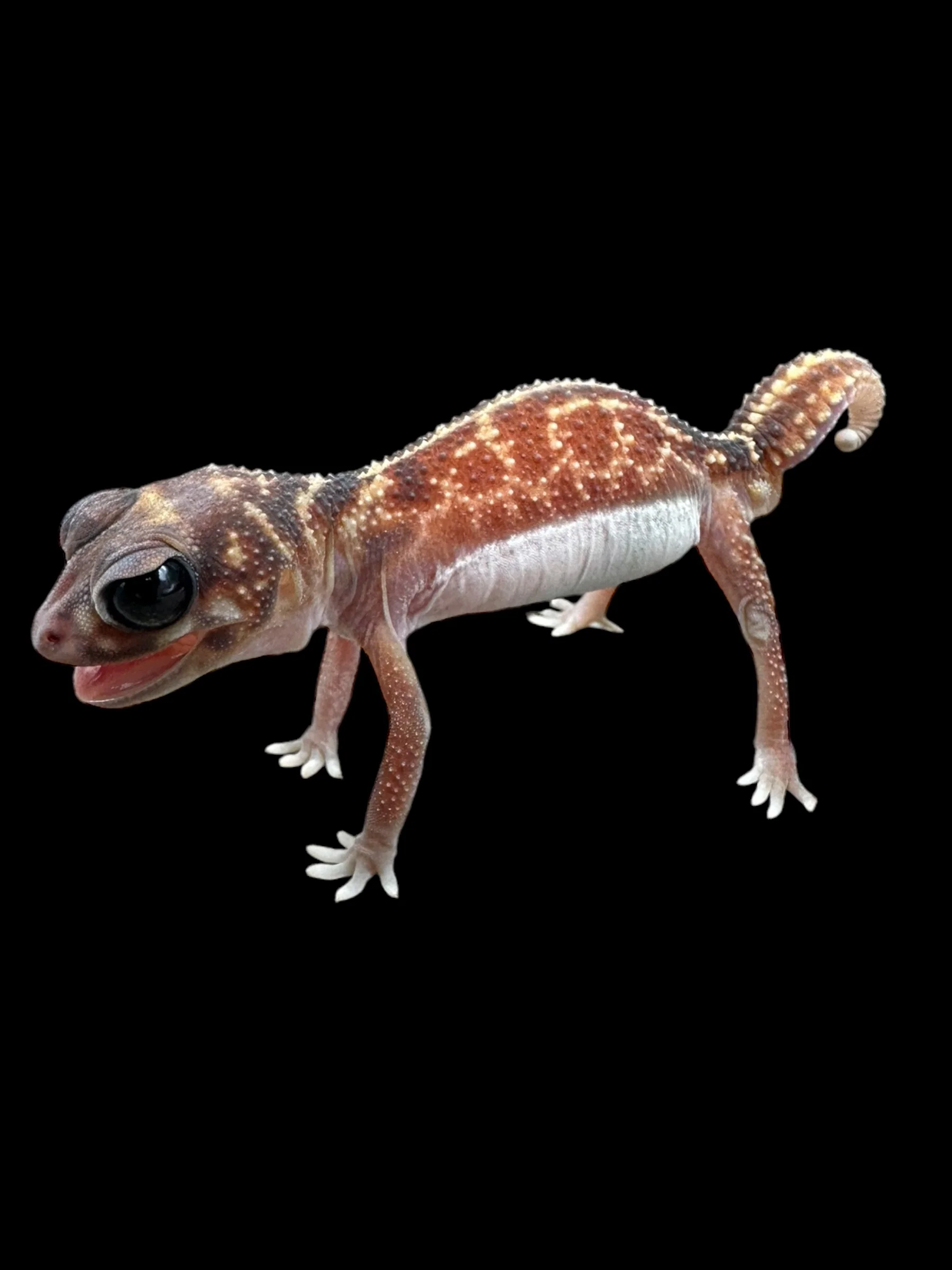GECKO MIDLINE KNOB-TAILED (Nephrurus vertabralis) – Pair
Full Description
Here is a complete care guide for the Midline Knob-Tailed Gecko (Nephrurus vertebralis) — a striking, desert-dwelling gecko species native to Australia, known for the pale stripe running down its spine and its signature tail “knob.”
Midline Knob-Tailed Gecko Care Guide
Species: Nephrurus vertebralis
Common Name: Midline Knob-Tailed Gecko
Origin: Arid interior regions of Western and Central Australia
Adult Size: 4–5.5 inches (10–14 cm)
Lifespan: 10–15+ years in captivity
Temperament: Bold, vocal, but generally calm when acclimated
Enclosure
Tank Size:
-
Minimum: 10-gallon long (20″x10″x12″) for one adult
-
Ideal: 20-gallon long or larger for more space
-
NOTE: Best housed individually. Avoid cohabitation unless experienced.
Enclosure Type:
-
Terrestrial; prioritize horizontal space
-
Secure, escape-proof lid
️ Temperature & Lighting
Temperature Gradient:
-
Warm side (basking): 90–95°F (32–35°C)
-
Cool side: 75–80°F (24–27°C)
-
Night: Can drop to 68–72°F (20–22°C)
Use an under-tank heat mat with a thermostat or an overhead ceramic heat emitter. Avoid hot rocks.
Lighting:
-
UVB not required, but a low-level 2.0–5.0 UVB can benefit activity and calcium metabolism
-
Maintain a 12-hour light/dark cycle
Substrate
Best Substrates:
-
Clay/sand mix (e.g., Zoo Med Excavator Clay)
-
DIY mix: 60% play sand + 40% organic topsoil or excavator clay
These geckos are burrowers, so provide at least 2–3 inches of compactable substrate.
Avoid:
-
Calci-sand
-
Loose dry sand (risk of impaction)
Decor & Hides
-
At least 2 hides: one on the warm side, one on the cool side
-
Moist hide: Use a small hide with damp sphagnum moss or paper towel to help with shedding
-
Add rocks, cork bark, desert-safe fake plants, or branches for enrichment
Humidity & Water
-
Ambient humidity: 30–40%
-
Moist hide: Essential for proper shedding
-
Water bowl: Small, shallow dish of clean water should always be available
Mist lightly every few days if ambient humidity drops too low.
️ Diet
Insectivorous — feed a variety of appropriately sized live insects:
Staple Insects:
-
Crickets
-
Dubia roaches
-
Black soldier fly larvae
Occasional Treats:
-
Mealworms, waxworms, or hornworms (use sparingly)
Feeding Schedule:
-
Juveniles: Daily
-
Adults: Every other day
Supplements:
-
Calcium with D3: 2x/week
-
Multivitamin: 1x/week
Dust feeders lightly before offering.
Cleaning
-
Spot clean daily (remove feces/uneaten insects)
-
Refresh water daily
-
Deep clean every 4–6 weeks: replace substrate, clean all décor and surfaces with reptile-safe disinfectant
Handling & Behavior
-
Bold and inquisitive, may vocalize when startled
-
Generally tolerate gentle handling once accustomed
-
Never grab by the tail — it can drop (and regenerate)
Handle over a soft surface and limit sessions to 10–15 minutes max
Health Watch
Common Issues:
-
Impaction: From loose sand or oversized insects
-
Dehydration: Wrinkled skin, dull eyes, or bad sheds
-
Respiratory infections: From cold/damp environments
-
Stuck shed: Especially around toes and tail — use a moist hide or shed assist soak
✅ Supplies Checklist
-
Appropriately sized tank (10–20 gallons per gecko)
-
Heat mat with thermostat
-
Optional low-output UVB light
-
Digital thermometer + hygrometer
-
Clay/sand substrate
-
Warm, cool, and moist hides
-
Feeding tongs and dusting supplements
-
Variety of feeder insects
Summary
| Feature | Requirement |
|---|---|
| Temperature (Basking) | 90–95°F (32–35°C) |
| Cool Side | 75–80°F (24–27°C) |
| Humidity | 30–40%, with moist hide |
| Lighting | No UVB required, but low UVB optional |
| Substrate | Clay/sand mix for burrowing |
| Diet | Insectivore, feed 3–4x/week |
| Handling | Calm, but no tail pulling! |
| Housing | Solo housing is best |

